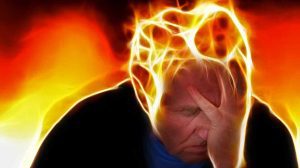When a sharp chronic pain erupts, usually the first thing most of us do is take painkillers because they are the most accessible and immediate thing.
After a while, as the pain continues, you seek other solutions, different treatments, but without success – the pain does not go away and continues to annoy and harass and manage you. After a few months, the pain becomes a chronic pain that runs through every moment of the day. You may have tried alternative therapy for a while, physiotherapy, or even surgery.
As time passes without any real improvement and the pain continues and sometimes escalates and becomes a pain as sharp as a knife piercing your body, you are increasingly desperate to find a way to make the pain stop.
More than 15 years ago when I was a young mother with an independent business, I woke up one morning and couldn’t move.
My back was “caught” so hard that every movement caused me immense suffering, every breath was a nightmare and every action was a supreme effort. The road to the toilet was a beret journey as I was walking on all fours at snail’s speed and standing up I couldn’t even.
I went to an orthopedist who gave me strong pain medication and recommended physiotherapy. Despite the difficulty of getting out of the house, I once went to the physiotherapy institute where I had an electrical device placed on my back that sent searing currents along my lower back for 20 minutes.
I returned home with no improvement – on the contrary, the trip to the gym and back only made the pain worse. For about a month I stayed on the sofa in the living room, the only place in the house where I could lie at an angle where the pain was most “bearable.”.And I continued to seek treatment to help me. I had a baby at home and I couldn’t do anything for him, I was disabled and for me, the world collapsed!
I tried various therapists who came to my house and did: reflexology, acupuncture, shiatsu, and twine, I tried hot baths, ice, stretching, and cupping. And what’s not?
It took me a long time to recover and get back to myself little by little.. For a long time, the place in my back bothered me almost nonstop.
If I had known everything I know today, it would have looked different.
Chronic pain is not similar to normal pain
Chronic pain is pain that lasts longer than 12 weeks (3 months) despite medication or treatment.
If there is chronic pain, the reason is that our pain system is not working normally. The pain won’t go away and the reason for this is because “pain messages” circulate in our nervous system even when everything is fine – just like a false alarm.
Pain can’t stop thinking about the pain!
Painkillers help cover the pain a little bit but don’t solve the source of the problem – the pain is still there.. No matter how hard we try to ignore it. It’s real, it hurts, and it’s probably not going to go away on its own.
Understand chronic pain:
It’s not just a physical problem. Pain is a relentless and invisible attack that squeezes most of our energy, clouds our lives, radicalizes our emotions, and constantly threatens to spoil the most precious moments of our lives.
And what to do with it?
Accept that it hurts?
Give up hope that there is something to be done.
Anyone who suffers from chronic pain and has done some research understands that the pain system in our brain signals to us through pain when something is wrong.
Pain is our body’s alarm bell. Over time the mechanism of this system becomes sensitive and therefore often inaccurate and fake
just like a broken alarm.
So can the central pain system be restored to its normal state?
This is an important question because once you have pain for a long time (months or years)
The source of the problem is usually related to an imbalance in your pain system.
When it does – it’s no longer just a physical thing.
Most people with chronic pain are fixated on finding the physical cause of their pain and looking for a way to release it. They spend all their time looking for solutions through medical treatments like drugs and physical therapies. When there is no noticeable improvement and the pain persists, they continue to try other ways and sometimes even become addicted to painkillers.
Living with pain for months or years can make you feel drained and exhausted.
Over the years, I have helped many people get out of the cycle of chronic pain and return to a
full and active life.
Here are some of the tips for chronic pain:
Step One: Understand how your pain system works
When you understand this, you can look at your pain completely differently. Understand how the nervous system transmits pain through the external sensations from our body to the brain that interprets it. What happens if this interpretation is inaccurate?
What are the types of chronic pain that exist? Use this new knowledge to question your beliefs about what’s wrong with your body (and what’s causing your pain).
Find out what kind of pain you are most in. Sharp pain, sometimes, instead of one? Projecting?
Step Two: Find out what pain you have.
Now it’s time to revisit your original diagnosis and change it with your new understanding. Once you understand all this, a lot of the pain will go away because the uncertainty creates a lot of anxiety and negative beliefs that unconsciously reinforce your pain.
Step Three: Understanding the connection between physical and mental pain It’s time to examine the physical side of things. In most people who suffer from chronic pain the source of the pain is very active trigger points. Muscle “flounders” can create constant pain and tension and will continue to do so until they are released. These points are ALSO CALLED STB SOFT TISSUE BALANCING OR trigger POINTS and are operated by our defensive system.
Step Four: Deep breathingA deep breath into the diaphragm stimulates a sense of vitality and greatly helps to reduce stress and relieve pain. When areas of the body are constricted, the flow of oxygen in them decreases and reduces the vitality of the body which works hard to cover up the difficulty.
When the body is in a state of contraction over time, the pain mechanism comes out of reset and works in an inaccurate way.
Breathing has the ability to release and open. PRACTICE BREATHING INTO THE DIAPHRAGM: DRAIN THE AIR FROM THE LUNGS AND START BREATHING DEEPLY – AND TELLING THE HEART UP TO 5 SLOWLY – TO ACTUALLY FILL AIR IN THE STOMACH AS WELL. Hold a drop and release again on the count of 5.
Do it 2-3 times in a row. Repeat this breath every time you remember or set a daily reminder for example as part of another activity such as a coffee break. This kind of breathing really restores the whole body. You feel the change immediately. Many people find this breathing very helpful in reducing stress and it relieves them. The good feeling of pumping oxygen through the body relieves the pain and takes the focus off it.
Step Five: Learn more about trigger points and where in your body they are
The patients who come to the clinic come with the pain that runs their lives and makes them unbearable.
It’s amazing how painful it has to be for us to start taking care of ourselves.
A few weeks ago, a “young” 85-year-old man came to me (indeed young was very young in personality) who was suffering from radiating pain from the shoulder along the arm and especially in the forearm between the elbow and the palm of the hand. He was unable to hold a glass and serve it in his mouth and each act of reaching out caused him a sharp pain that caused him to drop from his hand what he was holding at the moment. In the process, the story slowly became clear. The pain in this hand existed for about six months and before it started he suffered for a year and a half very similar pain in his other hand.
Only now, when he could no longer, did he seek help. Many patients carry the pain for a long time until they break down.
After an initial diagnosis in which we identified the source of the pain, we began a process of several treatments. Together we understood the story behind his pain and even this very realization made him very quiet and the intensity of the pain had already diminished.
As I always do, during each treatment he was given another tool and another tip for continuing self-care at home with precise guidance on how and how much.
Pain control is in the hands of the patient.
You know yourself best!
The exercises I give are so simple – they are just a few minutes a day and can be done without any problem almost anywhere. What’s most striking about it : they give an immediate result.
Back to the end of the story: In the fifth treatment, the”guy” came to me with a smile and told me that the pain had passed and that he was continuing to do the exercises and compressions that I had given him. Along the way, we also dealt with a problem that had been solved as a non-starter (before, he had to hold something while getting up from a session). Other problems are also discovered in treatment because looking is at the whole body and the way of life explains the whole story of pain and the limitations it creates.
Most pain cases can be treated alone. Understanding the process from the source of the pain and how things work – combined with appropriate and simple tools, it is possible by reading the pain map in its entirety that most chronic pain can be relieved.












Add Comment